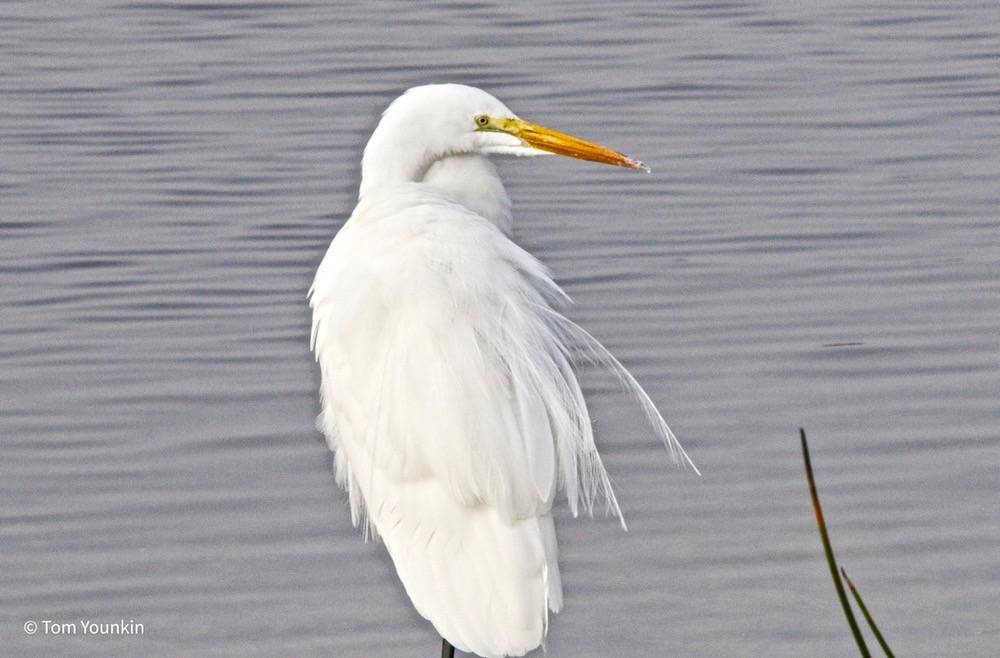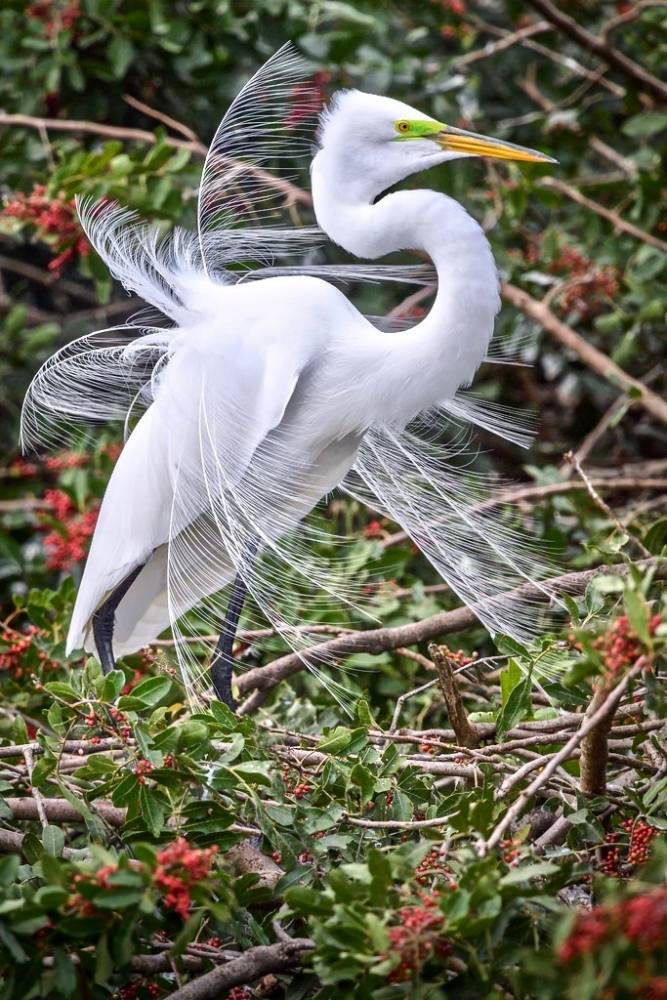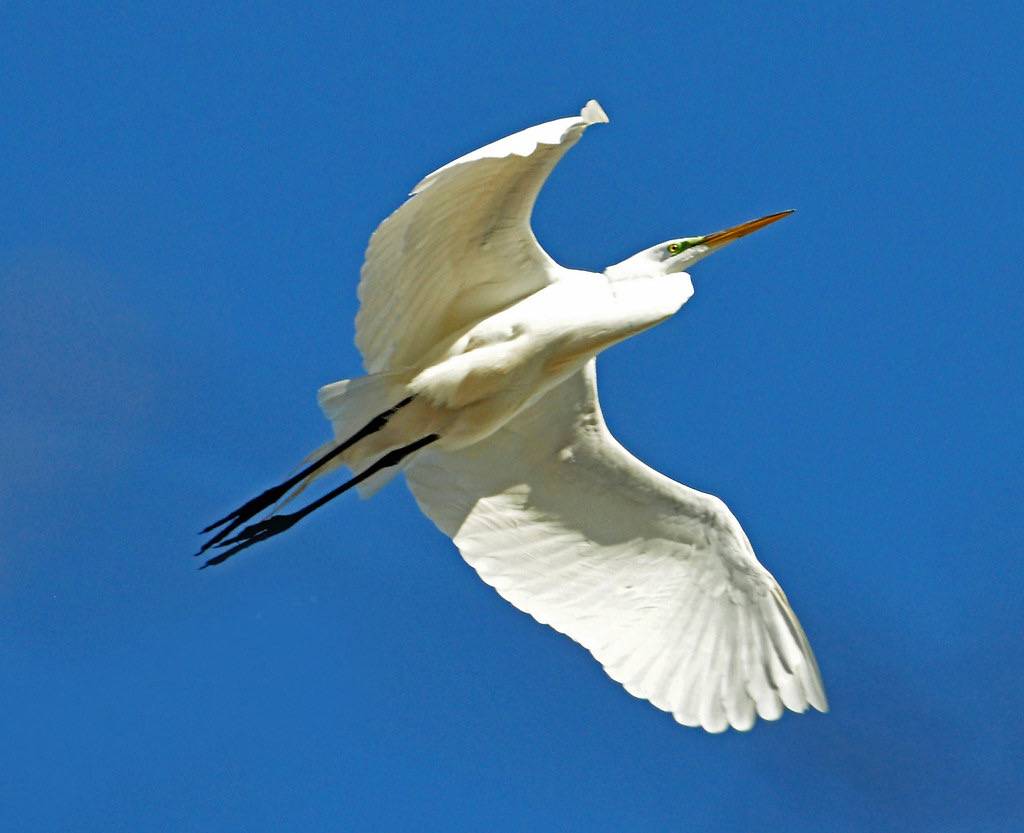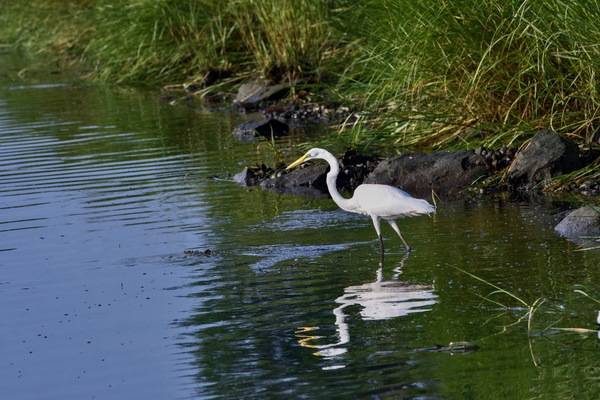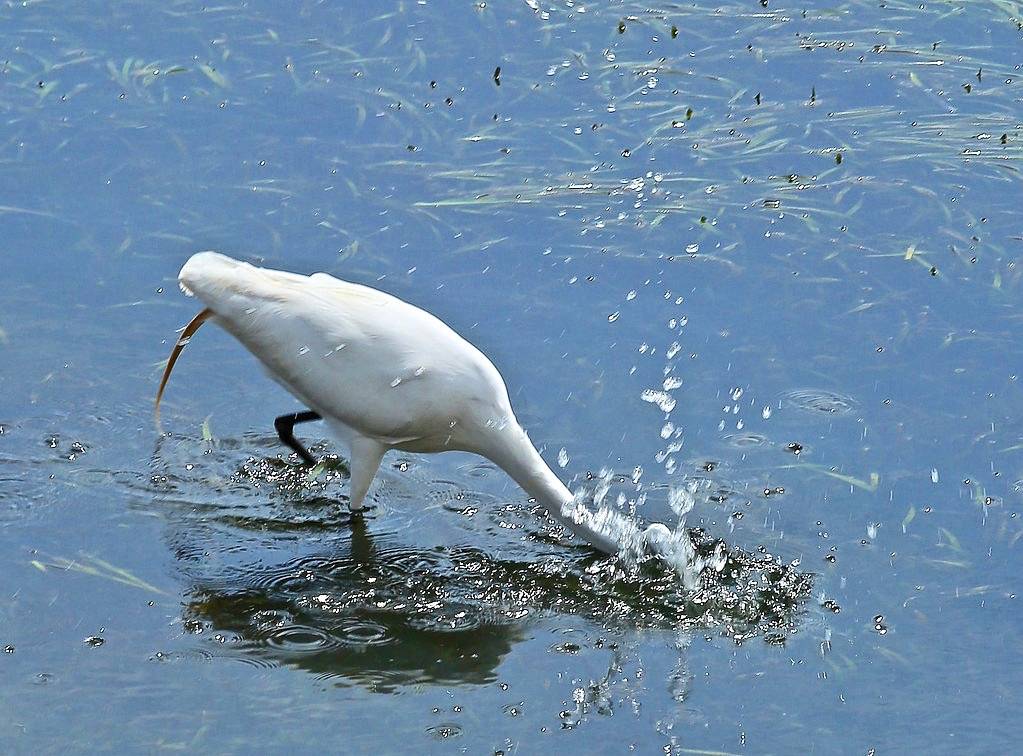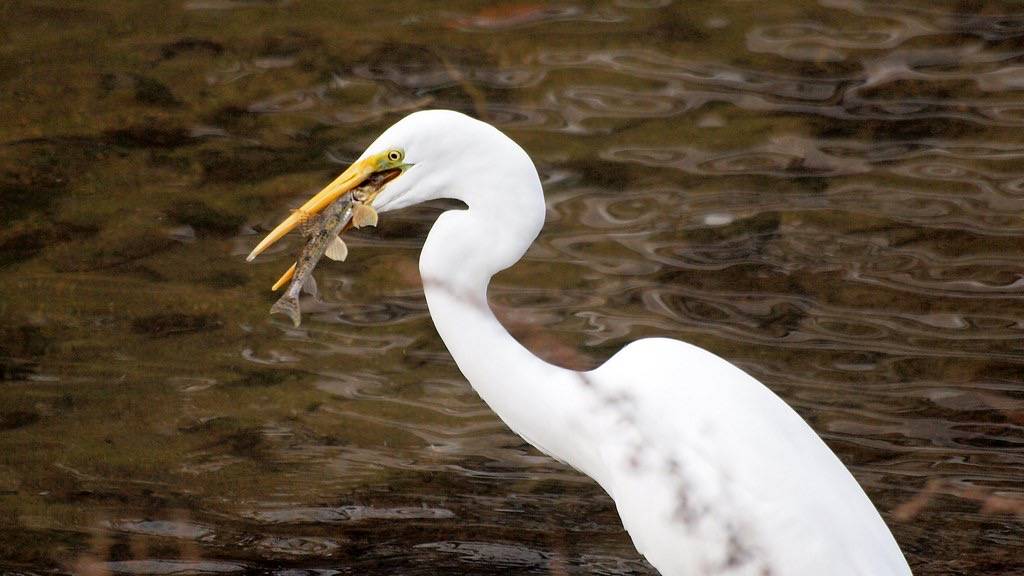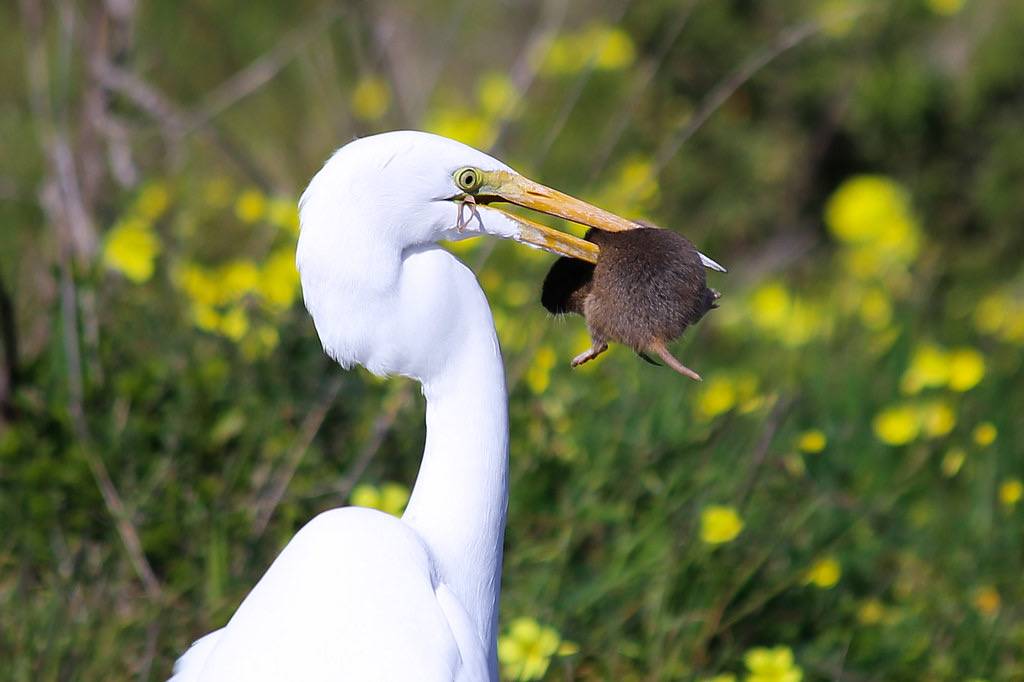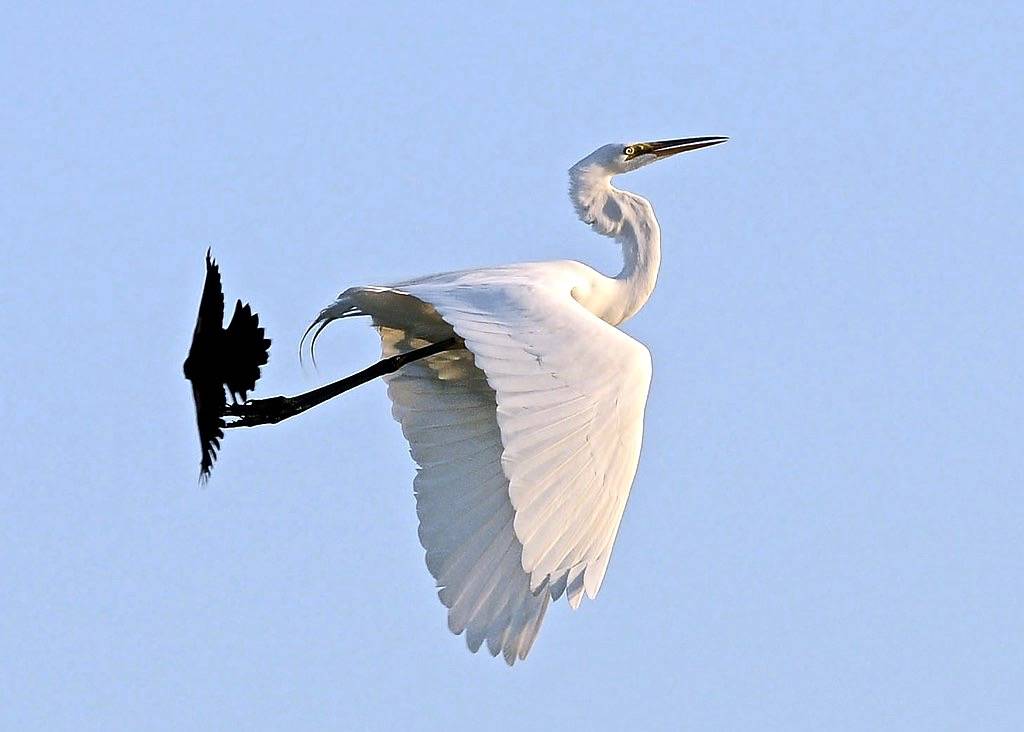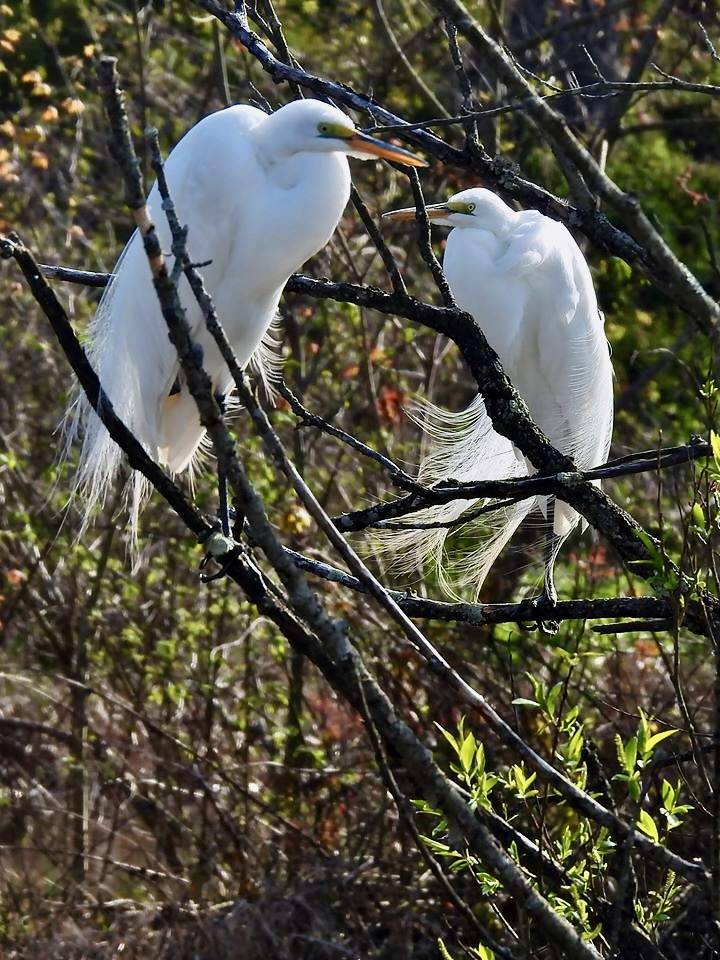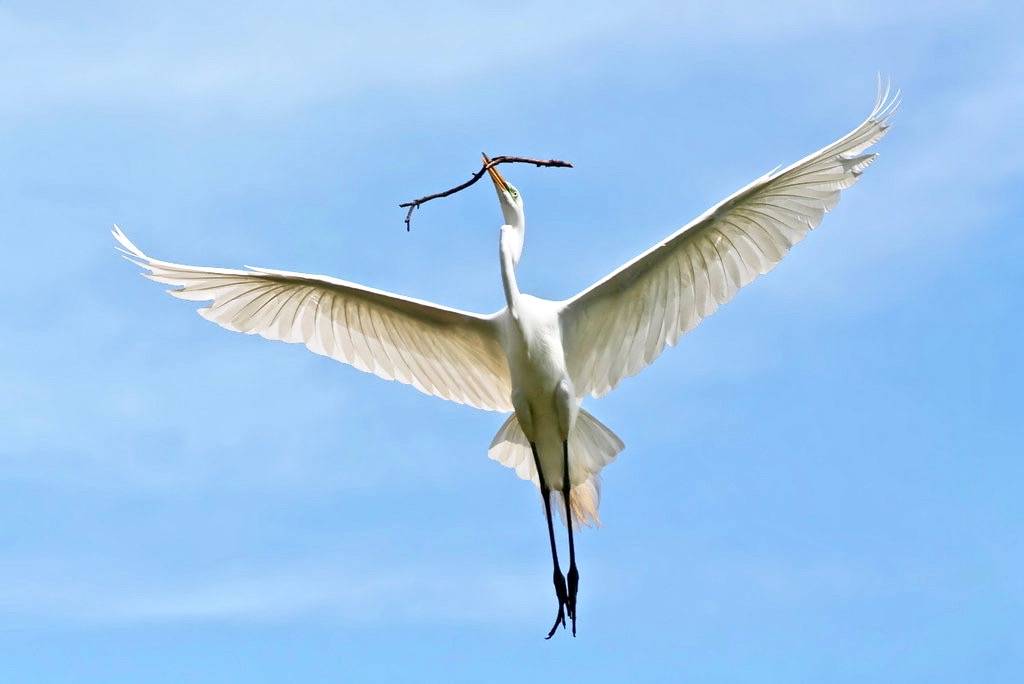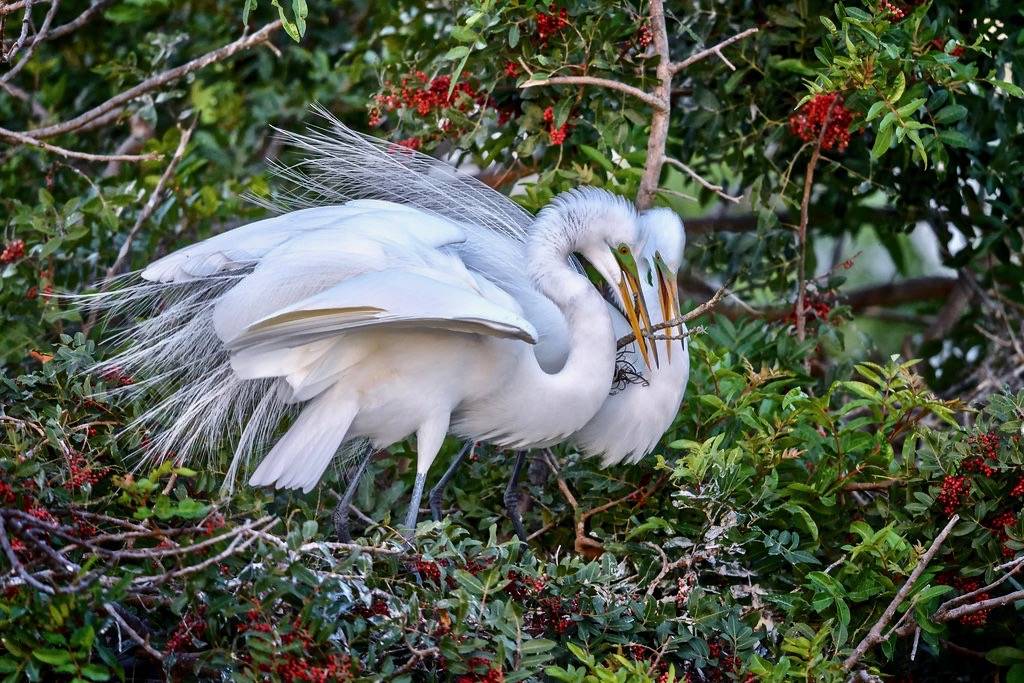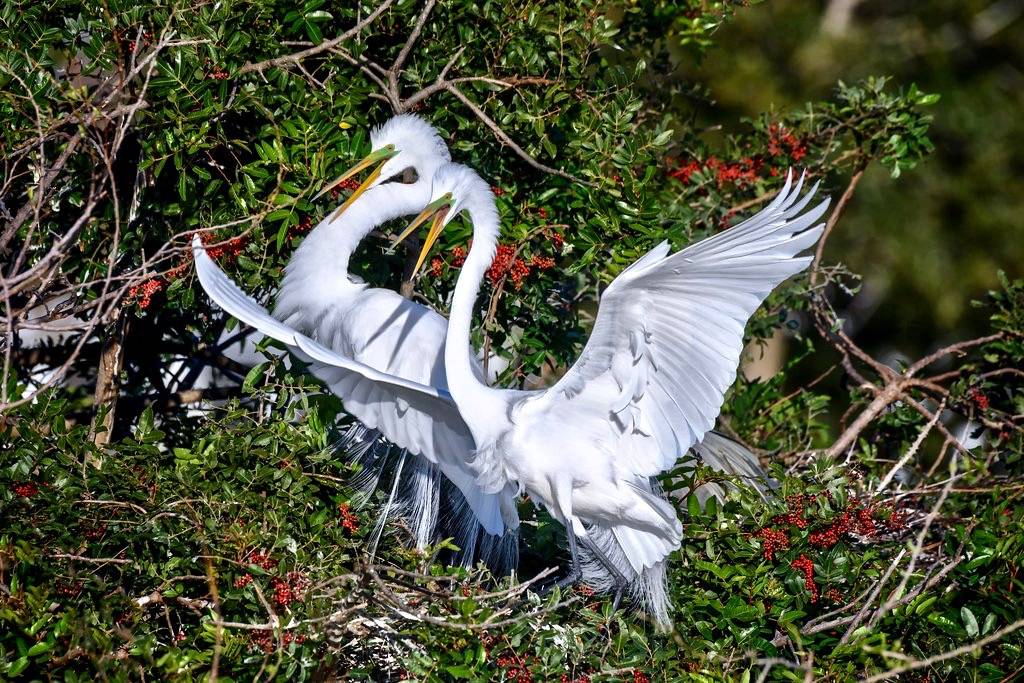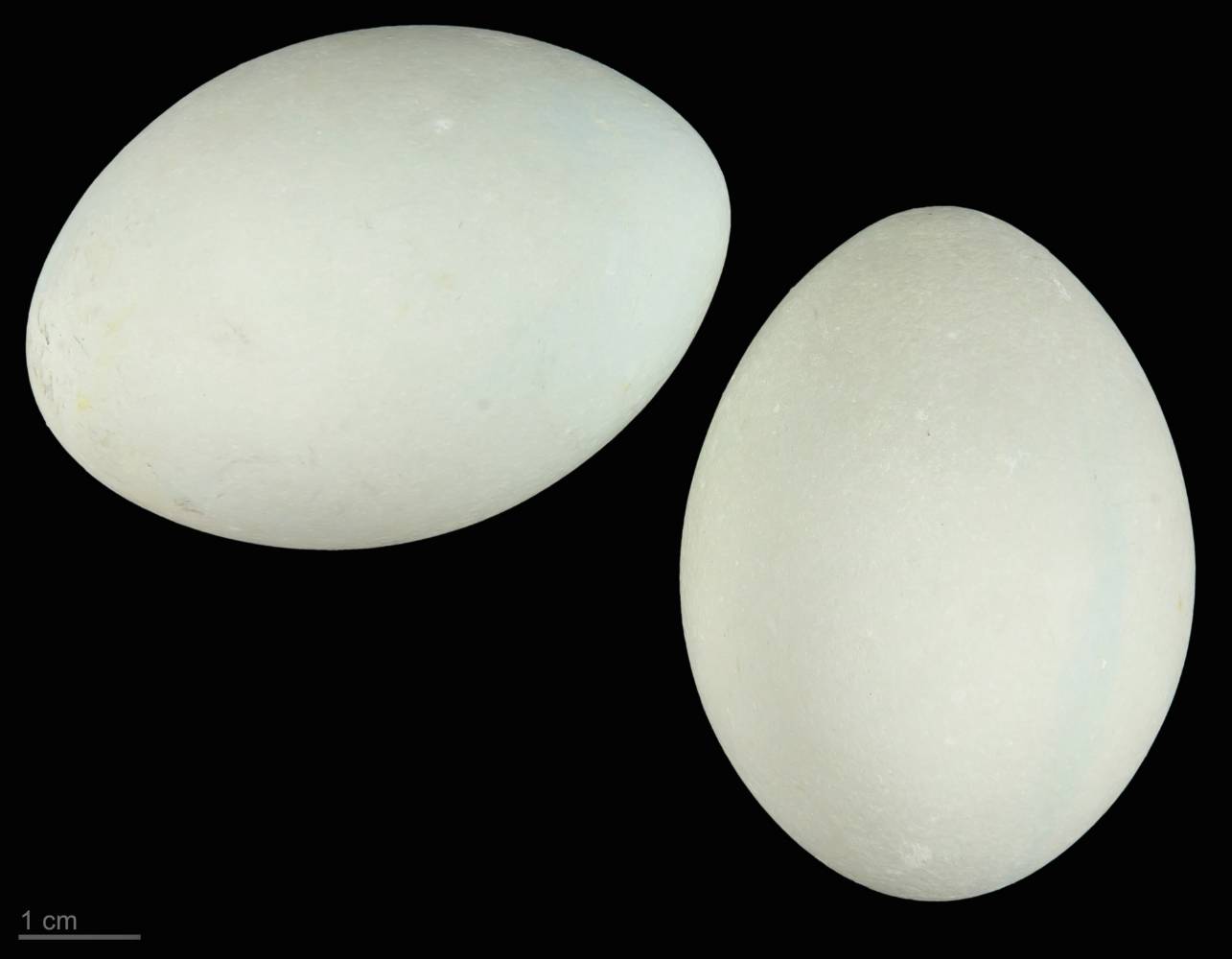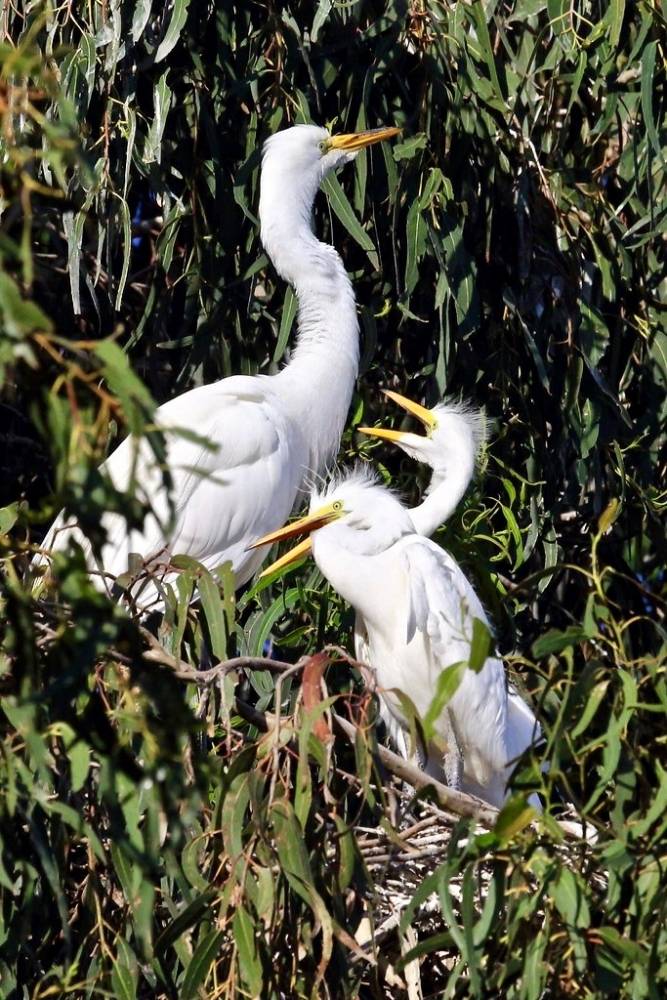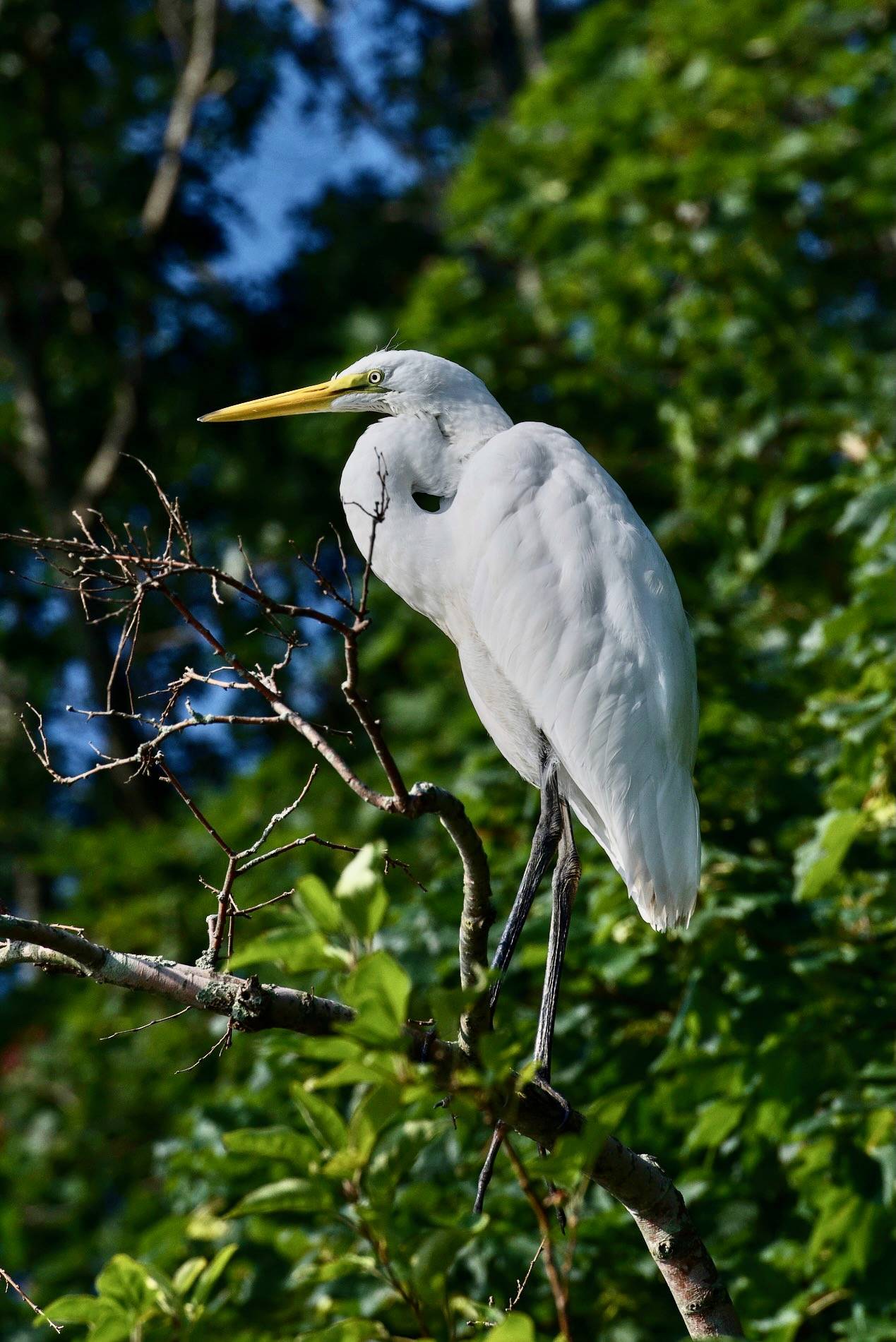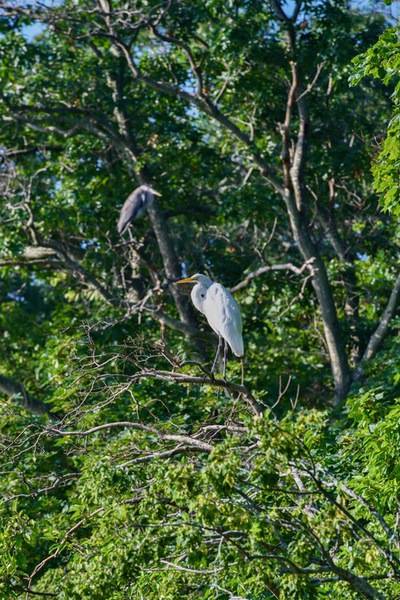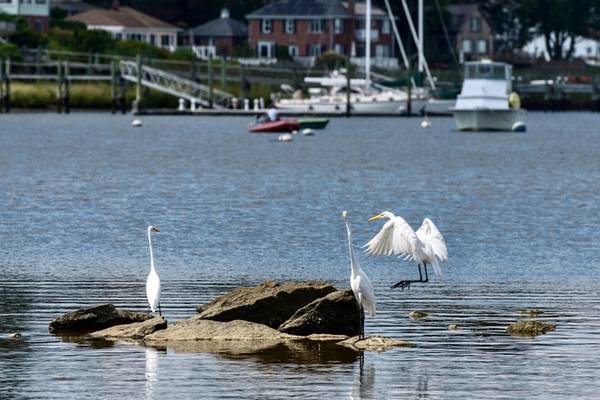Great Egret
The leggy and graceful Great Egret has been observed ambling along the shorelines of Salter Grove from March through October. It does not breed in the park but splatters of white droppings on foliage along the Marsh Trail indicate where individuals have roosted overnight. Two or three egrets occasionally visit at the same time but solitary individuals tend to be more common.
The Great Egrets seen at Salter Grove may either be wandering immature non-breeding individuals, or are adults taking a breather from nesting colonies on islands in Narragansett Bay (Dyer Island, Gould Island, Prudence Island, and Rose Island). They probably stop in to feed on the abundant fish and marine invertebrates in the shallow waterbodies of the park. They would not shy away from grasshoppers, or a small rodent or two when available.
It can be confused with the smaller Snowy Egret, especially when the two species are not standing near one another. To distinguish between the two, just remember that the Great Egret has a proportionately much longer neck, a yellow bill, black legs and black feet whereas the Snowy egret has a relatively short neck, black bill and black legs, but bright yellow feet.
Great Egrets breed across North America from southern Canada to the neotropics. Populations breeding in the north migrate south for the colder months whereas southern populations are resident year round.
It was decimated nearly to extinction across North America in the late 19th Century along with other bird species endowed with plumes deemed fashionable for women's hats. Fittingly, the Great Egret is the symbol of the Audubon Society which was founded in part to prevent the killing of birds for their feathers.
Since 1918, populations of the Great Egret has rebounded under protection of the Migratory Bird Treaty Act and its range has expanded northwards except in areas where suitable wetland habitats have been eliminated.
For more information:
https://www.allaboutbirds.org/guide/Great_Egret
https://www.audubon.org/field-guide/bird/great-egret
https://en.wikipedia.org/wiki/Great_egret
http://www.biokids.umich.edu/critters/Ardea_alba/
https://www.nps.gov/ever/learn/nature/greategret.htm
https://www.newportthisweek.com/articles/surprises-from-nature/
https://www.fws.gov/law/migratory-bird-treaty-act-1918

 08-17-13.jpg?w=350?blur=10)
